Wondering when is the best time to visit Japan?
Good question, but the answer (below) depends on your personal preferences and needs, as well as what budget you want to make available, as some times of the year are more expensive than others.
Luckily, I have been exploring Japan throughout the seasons since 2000, so I’m probably well-placed to guide you on this topic. 😁
Japan definitely has something to entice you, whatever time of the year. But how do you choose the best time to visit Japan for you personally?
Hint: Read this post. 😉
The Best Time To Visit Japan - All You Need To Know
by Rob Dyer
When is the best time to visit Japan? You’re not alone in trying to figure that out. In 2019, before the COVID pandemic, Japan saw a record 32 million visitors.
That’s 32 million people, that did exactly what you’re doing right now, and that’s do at least a little research on the best (and worst) times of the year to visit japan before committing to booking your flights.
To save you time, I've pulled together all the essential information into this one post for you. Together, we'll navigate through each season's highlights (and lowlights) - from avoiding crowds during peak travel times to considering cost factors affecting your trip.
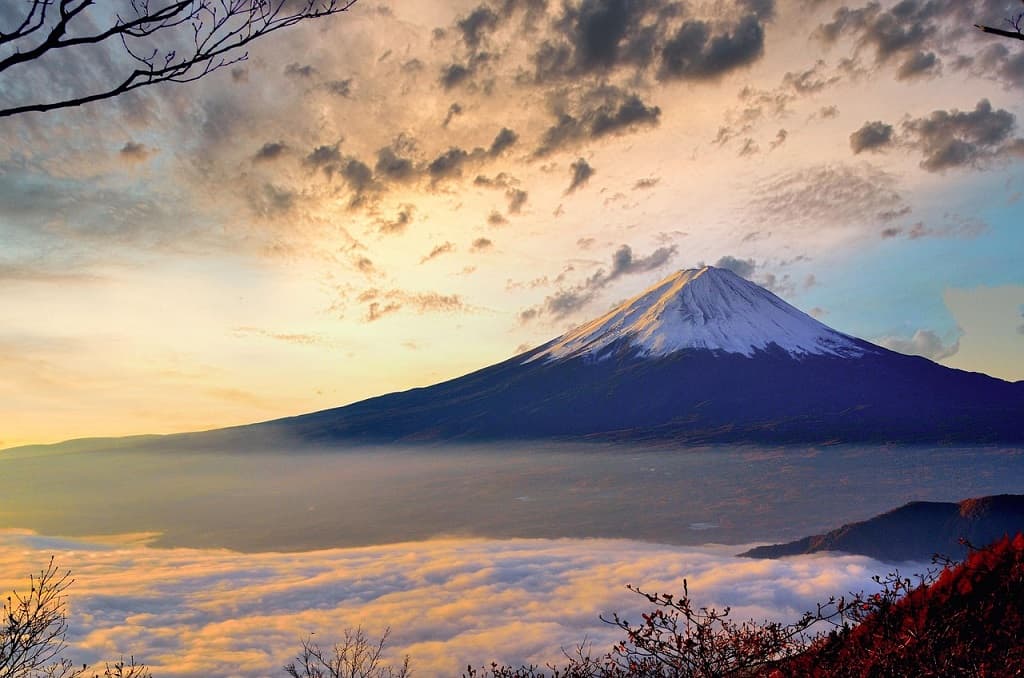
Mt. Fuji, about 100 km west-southwest of Tokyo, is a magnificent sight at any time of the year
By the end of this post you will have a better understanding of when is the best time to visit Japan - for your specific needs and travel preferences and interests.
Introducing Japan's seasons
The seasons in Japan are intricately entwined with the country's culture, way of life, and opportunities for travel. Each season presents a distinct aspect of this captivating island nation and the things to see and do vary considerably from the colder north to the subtropical south.
The spring months (March to May) herald the arrival of cherry blossoms that transform parks, temples, and gardens across the land. With more mild temperatures, outdoor activities in Japan such as picnics under sakura trees or hiking in nature become more practical ways to spend your time.
If you're partial to hot weather, summer (June to August) might be your preferred choice. (Though it's definitely not mine!) Despite the sometimes stifling heat and humidity, it’s a prime period for colourful festivals occurring throughout Japan, including plenty of firework displays.
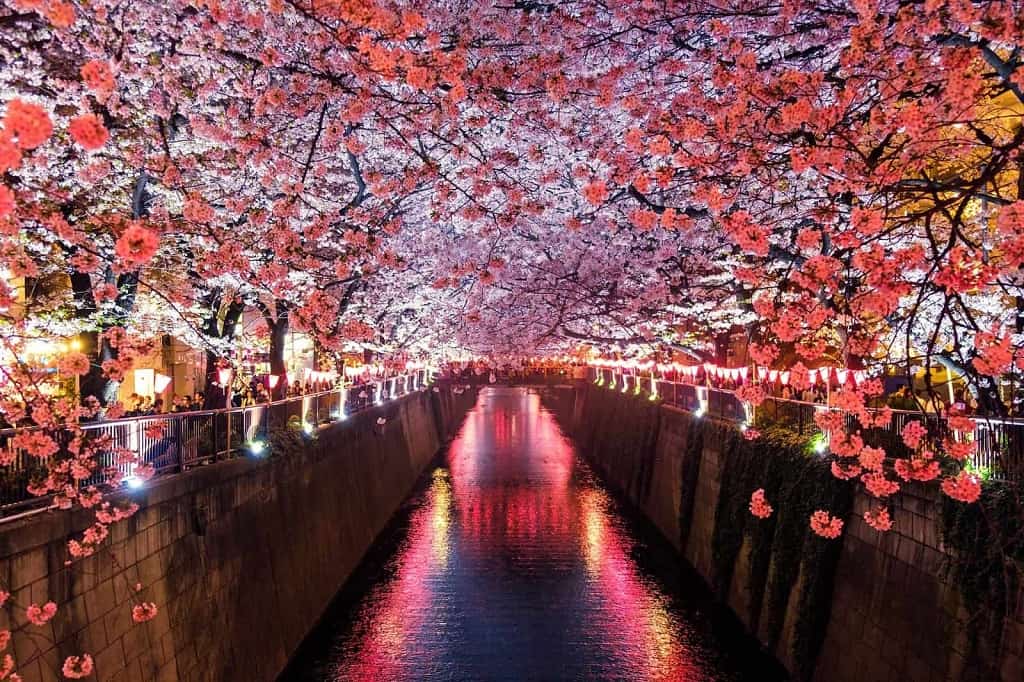
Every spring, the Meguro River in Tokyo's Nakameguro district is turned into a tunnel of blossom by 800 cherry trees
Maybe the stunning natural spectacle of fiery foliage painting the landscapes in autumn/fall (September to November) is what attracts you the most. Temperatures are more moderate but there's often plenty of blue skies and bright sunshine, making this a lovely season for walking.
Or perhaps you're enticed by tales of powder-perfect snow or the chance to really feel the ice cold wind in your face on wild Hokkaido, Japan's northern most island in winter (December to February). And with New Year celebrations seeing out the old year and welcoming in the new, there's plenty of cultural traditions to experience as well.
Distinctive climates of Hokkaido and Okinawa
Of the largest islands in Japan, Hokkaido is the northernmost of all, while Okinawa the largest most southerly island, although not the most remote. (That would be the Yaeyama Islands).
Hokkaido, lying off the northern tip of Japan’s main island Honshu, showcases distinct climatic characteristics due to its geographical location. The region is known for longer winters compared with other parts; snowfall starts early around October/November and lasts through to April/May.
Visiting Hokkaido during these months can offer memorable and sometimes unique activities, especially if winter sports like skiing or snowboarding are your passion, or immersing yourself in the island's remote wildernesses and getting close to nature.

Me snorkeling off the coast of Okinawa with my wife, we pre-booked this experience online
In contrast, Okinawa island towards the southern end of Japan’s island chain, enjoys extended summers which last from May all the way through to October owing to its subtropical climate.
The perfectly clear blue waters around its coastline provide plenty of chill-out or swimming spots for beach lovers. There's also opportunities for snorkelling and diving amongst its colourful marine life and to explore hidden caves (having done this myself, I can thoroughly recommend it).
There are a number snorkelling options around Okinawa's coastline, including this full-day snorkeling experience in the Kerama Islands.
Japan's seasons - key takeaways
Each season in Japan has its own special allure. Springtime, from March to May, is marked by cherry blossoms - perfect for outdoor adventures and sakura tree picnics. The summer months (June-August), although hot, are filled with vibrant festivals. From September through to November, Autumn/Fall sees trees across the entire country transform to golden hues. Starting in December and running through to February, wintertime in Japan sees huge snow fall in the north, with more mild temperatures in the south.
There are wide variations between Hokkaido island (in the north) and its extended winters catering to winter sports enthusiasts and southerly Okinawa island's long summers making it a haven for beach-lovers.
Spring in Japan - the cherry blossom season
Every year, in the heart of spring, Japan undergoes a transformation as cherry blossoms burst out in bloom nationwide. This sakura season is an emblem of beauty and celebration that attracts globetrotters from far and wide to the country.
The tradition of hanami parties comes alive during this period, with people gathering under the blooming cherry trees for eating, drinking and general merriment. Public parks turn into colourful spectacles, while lanterns suspended among branches of the trees create an enchanting atmosphere at night.
If you're thinking about visiting Japan during the cherry blossom season, and want to make the most of the chance, then meticulous planning many months (if not a full year) in advance is vital. The closely watched bloom schedule predictions across different regions vary by several weeks, and demand for hotel rooms (its not uncommon for hotels sell out ahead of the season), mean if you leave planning a trip during this season until just a few months beforehand, you'll already be too late.
VIDEO: How to Enjoy Japan's Four Seasons | Spring
Why you might want to avoid spring
Sakura season brings several considerations that you should be aware of before firming up your plans. While it's true that travelling in Japan at this time presents awe-inspiring vistas, there are some trade-offs worth noting.
For starters, crowd sizes tend to increase significantly during this period as both locals and international tourists throng to popular viewing spots like Tokyo’s Ueno Park or Kyoto’s Philosopher’s Path. You can expect these types of sites to be particularly congested and that might detract from your experience if you prefer more tranquil and relaxed travel.
If your time in Kyoto is limited and you want to see lots of its famous sights in a day, then this private guided tour is an excellent choice.
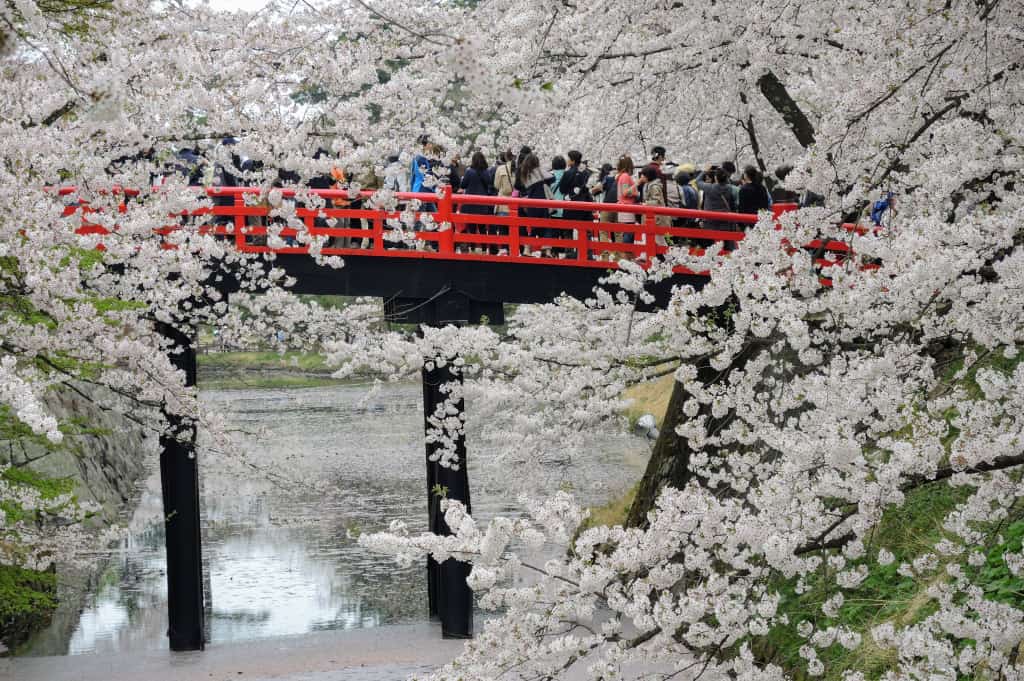
The cherry trees surrounding Hirosaki Castle in Aomori provide one of the country's best displays every April
Beyond larger crowds, accommodation prices often escalate due to heightened demand, with hotels sometimes doubling their rates compared with off-peak periods. This spike can make staying within budget a challenge, especially if you’re travelling longer distances and may need multiple nights' stay throughout your visit.
Cherry blossom forecasts play a significant role here, since these annual predictions drive much of the tourism industry's pricing strategies leading up to and during the sakura season itself. Be sure to check out my regularly updated annual guide to the official projections.
Seasonal spring food
Never ones to shy away from a good marketing opportunity, expect shops to sell all sorts of sakura-flavoured sweets, drinks (soft and alcoholic) and limited-edition items packing the shelves of convenience stores. Traditional seasonal dishes such as bamboo shoots cropping up in, or alongside, familiar dishes in restaurants, to fresh strawberries wrapped in mochi (super yummy!).
Sashimi aficionados seek out hatsugatsuo - the first bonito of the year. Clams also pop up in a variety of dishes more regularly during spring.
Spring in Japan - key takeaways
Spring is the only season if you want to witness the country's stunning annual cherry blossom displays and accompanying sakura festivals. The popularity of the blossom viewing brings with it huge crowds. Expect hotels to bump up their prices significantly to accommodate the crowds of national and international visitors.
Summer in Japan - a vibrant (if very hot and humid) experience
Experiencing summer in Japan opens up a realm of vibrant festivals, varying weather conditions, and unique travel opportunities. But, be warned, high temperatures and stifling humidity are part and parcel of summers in Japan. If (like me) you're not a fan of either, you might want to avoid coming to Japan during the summer at all.
However, if you can cope with the heat or humidity that most (but not all) of Japan experiences during the summer months (June to August), then you're in for a treat. Particularly when it comes to seasonal celebrations, festivals and firework displays.
VIDEO: How to Enjoy Japan's Four Seasons | Summer
Festivals galore: The heartbeat of Japanese summers
The magic of Japan’s summer festival season truly unfolds when you witness the spectacular Nebuta Matsuri festival in Aomori. From August 2 to 7, gigantic lantern floats take over the streets, accompanied by traditional music, all creating an experience you're unlikely to forget.
Kyoto’s Gion Matsuri, another gem of a festival,is a month-long celebration during July, where ancient carts decorated with intricate tapestries become moving art exhibits on the city’s streets. There are multiple smaller events throughout, but the Yamaboko Junko, or ‘grand procession of floats’, really is spectacular.
Another well-known summer festival is found in Tokushima on the island of Shikoku. The Awa Odori takes place every August and dates back over 400 years and is the largest folk dance festival in Japan, attracting over 1.3 million visitors every year.
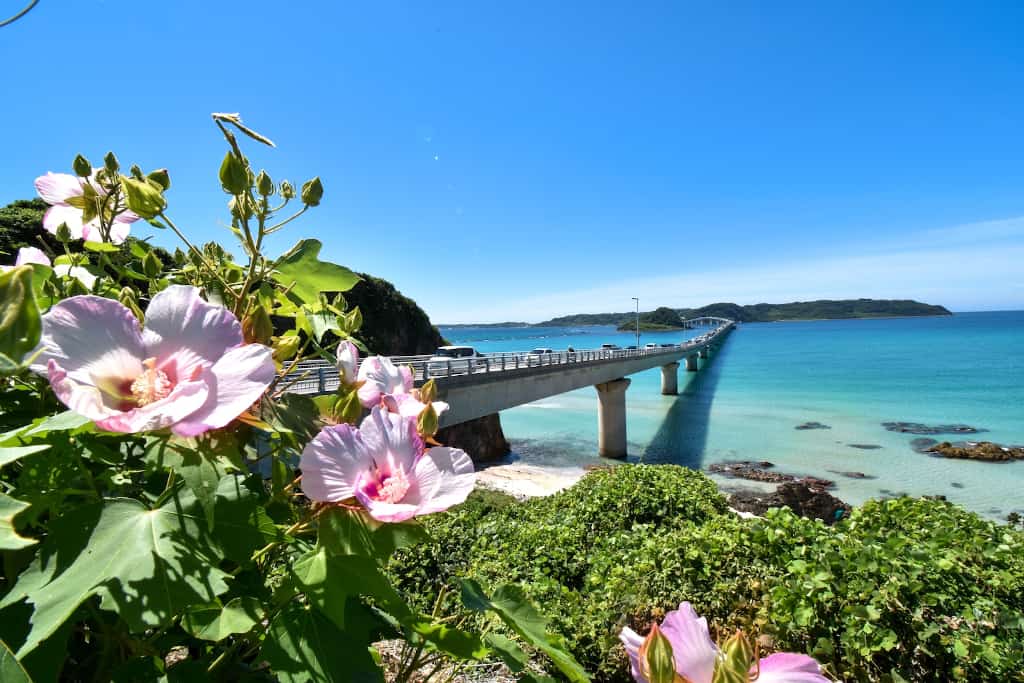
Tsunoshima Island in the Sea of Japan off the coast of Yamaguchi during summertime
Rainy and typhoon seasons: what to know (and avoid)
Tsuyu, or the rainy season starting around early June for about six weeks, can actually add a romantic touch to your visit. Rainfall doesn't mean back-to-back gloomy days, but rather moments when the weather directly influences the atmosphere (in all senses of the word), creating the sometimes tranquil mood of water droplets reflecting light off everything. A scene often depicted in classic Japanese art forms like ukiyo-e paintings or haiku poetry.
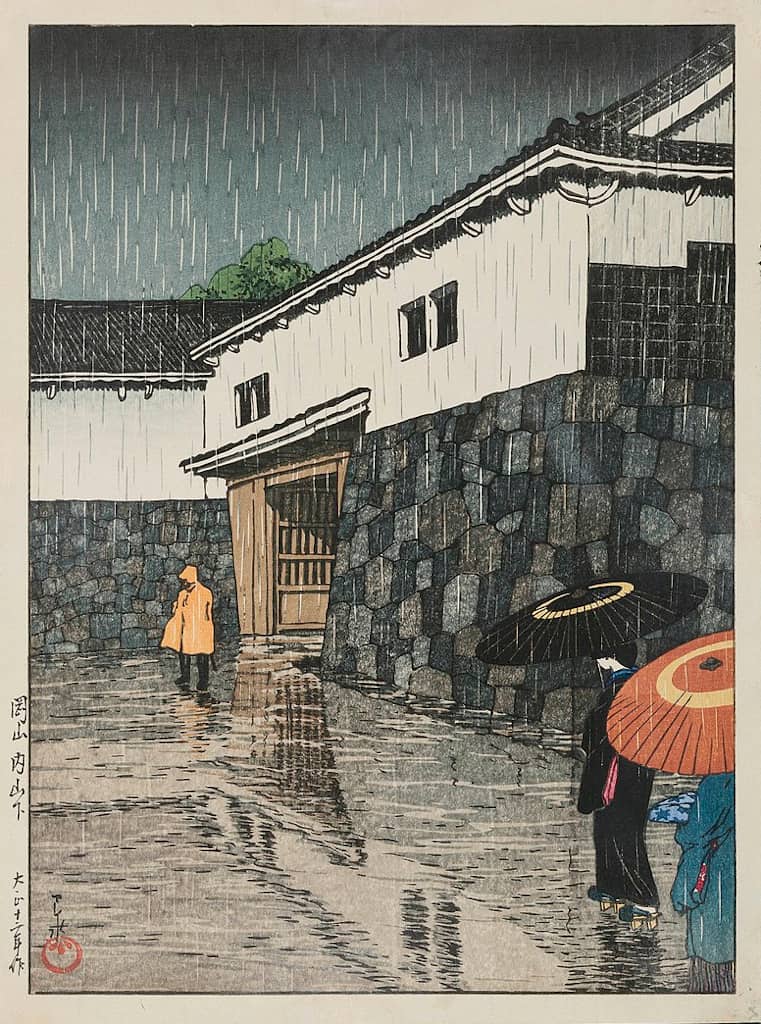
Japanese artist Hasui Kawase was famed for depicting seasonal weather in his paintings
Exactly whern when the rainy season falls, depends where in Japan you happen to be. It lasts from early June to mid-July in most of the country (Honshu, Kyushu and Shikoku), approximately June 7 to July 20 in the Kansai and Kantō regions in Honshu.
Due to climate change, rainfall in Japan can be very intense. Locals call short localized downpours as gerira gō'u or 'guerrilla rainstorm' for their unpredictable and intense nature.
Japan’s taifu (typhoon) season runs anywhere from May through to October, with the peak period falling during August and September. Although severe storms are not unheard of, the amount of disruption to travel is usually relatively limited. However, to avoid possible travel disruption and the worst of the weather, I generally aim to minimise travel during September and October, so you might want to do the same.
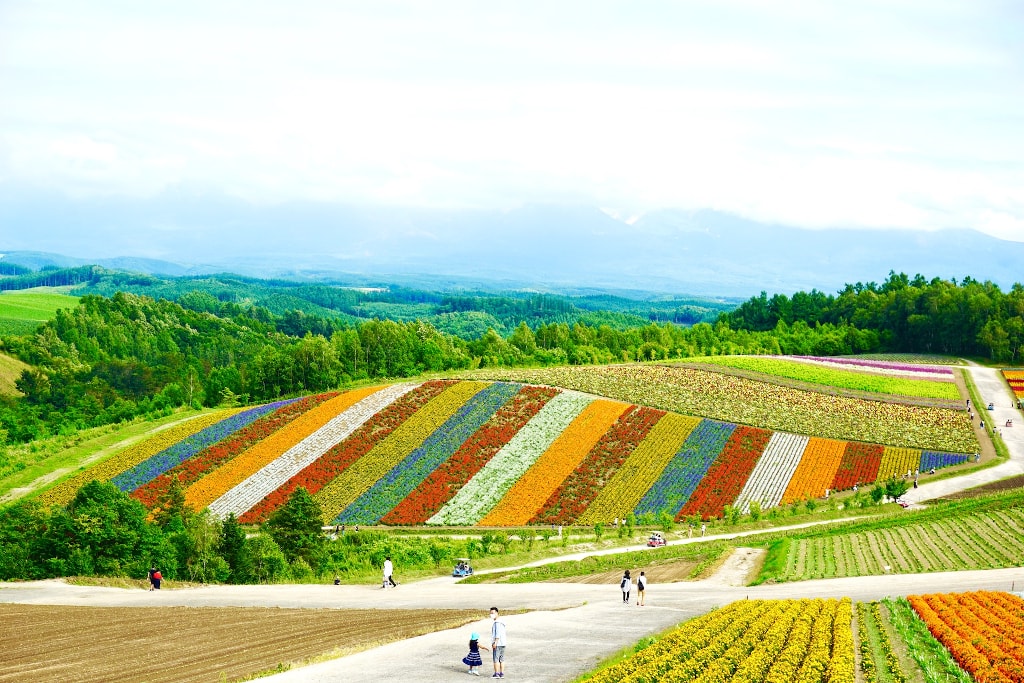
Fields of vivid summer flowers in Biei, Hokkaido
A brush with weather conditions
Beyond being humid (between 78% to 83% relative humidity during July and August) and hot (often exceeding 35°C/95°F), rainfall during summer in Japan also sees a significant increase. But these conditions can also add more charm to exploring the country thanks to its lush green landscapes coupled with scenic mountain views – perfect for nature lovers.
You can always head further north to Hokkaido during summer where the temperatures are noticeably cooler than on the mainland. The island, best known for its winter landscapes and events, still has plenty of nature to immerse yourself in, such as the vivid summer flowers seen in Biei and Furano each year.
Navigating your way through Japanese summers
Dressing appropriately can make all the difference. Opting for light clothing made out of breathable fabrics will help you stay cool amidst high temperatures.
Having an umbrella handy is a smart move. It shields you from harsh sunburns on sunny days and unexpected rain showers during the rainy season. These are readily available from many shops.
A couple of must-haves to carry with you during summer are a refillable water bottle to stay hydrated, and a folding Japanese sensu fan, or a rechargeable electric one from a shop such as Muji.
Also, if you're not a fan of bugs, be aware that mosquitoes are a feature of summers in Japan. They're most prevalent near water, but there are plenty of products to keep them away from you. Just pop into any pharmacy (which are everywhere in Japan).
Seasonal summer food
Foods at the peak of their popularity during Japanese summers understandably features those helping to cool you down. Zaru-soba cold soba is a must-try, and no home would want to go without some drool-inducing watermelon. Vividly-coloured shaved ice treats, known as Kakigori in Japan, are a modern sweet tasting staple, while ayu, a small freshwater fish, are pretty much ubiquitous grill at any summer festival or street-food stall, but also crop up in traditional restaurants as well.
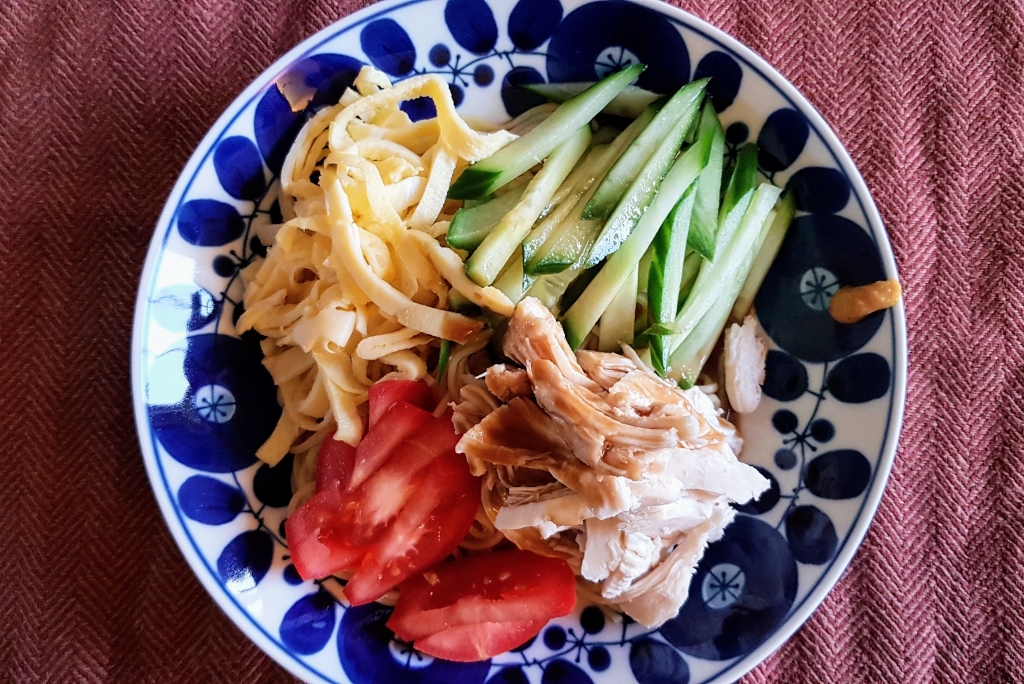
A summer favourite of many (including me) is hiyashi chuka. Chilled Chinese-style ramen noodles served with vegetable and meat toppings
A personal favourite of mine (and one we still regularly eat during summers back in England) is hiyashi chuka, or chilled Chinese-style ramen noodles are served with a multicoloured array of fresh vegetables. Toppings can be whatever you most fancy, but often include sliced cucumber, ginger, ham, and omelette. All served in a small sesame or soy sauce. Delicious!
Summer in Japan - key takeaways
Japan's summer is a lively mix of thrilling festivals like Aomori's Nebuta Matsuri and Kyoto's Gion Matsuri. Even with the tsuyu rainy season and subsequent typhoons, there are serene moments that echo scenes depicted in traditional Japanese art. Sure, it will get humid and rainier, but this can add to the charm, particularly amid Japan's lush green landscapes and scenic mountains.
Autumn travel - Fall foliage and comfortable temperatures
Confession time: autumn is my favourite season for travelling in Japan. 😉
There’s something uniquely special about autumn in Japan. It’s a treat for the senses, not least the eyes, as the landscape transforms into an artist's palette, with fall foliage painting the country in stunning golden hues.
This isn't just about visual splendour; it's also about experiencing Japan at its most comfortable temperature-wise. Let's explore why this season has many travellers (me included) falling head over heels.

Yahiko Park in Niigata Prefecture looking spectacular during autumn/fall | Photo: JNTO
The spectacular autumn colours
Journeying through Japan during autumn allows you to witness its sensational koyo season. This is where leaves transform into brilliant shades of red, orange, and yellow (and every variation in between). It's like walking through a live watercolour painting. Of course, leaves changing colour in autumn, isn't unique to Japan. But the experience in Japan is quite unlike anywhere else. Not least as the sheer volume of land in the country that is covered in trees.
There are thousands of countryside, and city, spots to enjoy this spectacle too: Kyoto's ancient temples or Tokyo’s city parks offer contrasting yet equally captivating backdrops. Learn more about viewing koyo here.
VIDEO: How to Enjoy Japan's Four Seasons | Autumn
Cooler climate and smaller crowds
If you prefer milder temperatures when exploring new places, then travelling during autumn is ideal. Broadly speaking, average daytime temperatures range from 15°C to 23°C (59°F-73°F). It offers respite from summer’s intense heat without being too cold as with the winter months.
This season sees fewer tourists around major attractions as well. You can enjoy peaceful walks under fiery maple trees at your own pace without worrying about crowds spoiling your experience - aside from the most well-known viewing spots that is.
So be aware that, although not as well-known outside of Japan as cherry blossom viewing in spring, plenty of locals do head out into the countryside to view the autumn leaves. Fortunately, the duration of the koyo period lasts longer than the more intense, short-lived sakura season, which helps spread the crowds more thinly compared with spring.
Festivals celebrating autumn splendour
Beyond natural beauty and favourable weather conditions, another reason visiting Japan during autumn is so special lies within cultural celebrations taking place throughout these months. These often honour the changing seasons and provide delightful insights into Japanese traditions.
The three day Kakunodate Matsuri began over 350 years ago, taking place between 7 to 9 September in Kakunodate, Semboku City in Akita Prefecture. It's famous within Japan for the battle between floats that crash into each other at the height of the celebrations and has been designated an Important Intangible Folk Cultural Property by the Japanese government.
Viator offers a half-day private tour of Kakunodate with a government-licensed guide.
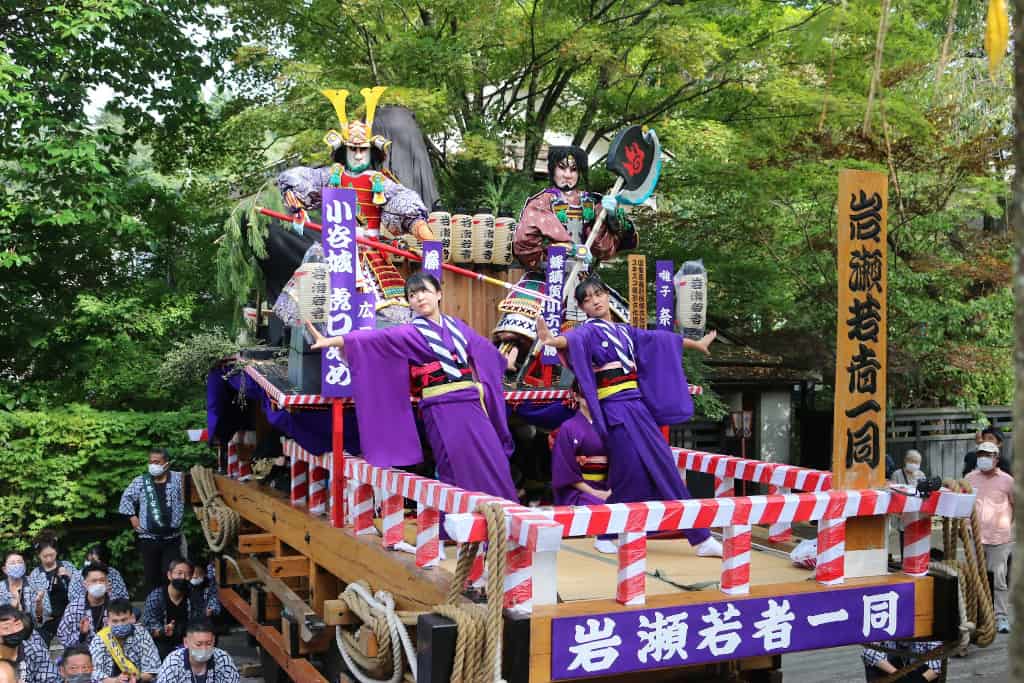
Kakunodate Matsuri no Yamagyouji in Akita is over 350 years old | © Tazawako Kakunodate Tourist Association
One such festival worth mentioning is the Takayama Hachiman Matsuri (Autumn Festival), taking place over two days in October, featuring elaborate floats paraded through the streets of the old town. It truly captures the essence of traditional Japanese culture whilst surrounded by a beautiful fall backdrop. If you can't make the annual festival, it's still possible to explore the rural and historic region on a small-group e-bike tour.
If festivals aren't really your thing, no worries. There are plenty of other ways to make the most out of the golden hues blanketing the entire nation, including visiting national parks and Japanese gardens.
Seasonal autumn/fall foods
Come autumn time, and in keeping with leaves changing to red everywhere, persimmons (kaki) are to be found all over Japan during the season. Yakiimo are roasted bright yellow or purple sweet potatoes (and another favourite of mine). I still have fond and vivid memories of my first sampling from a vendor on a bicycle en route to our local shrine, but are usually bought either from a small van playing music as it weaves its way through suburban streets during the evenings, or from street-food stalls in the cities.
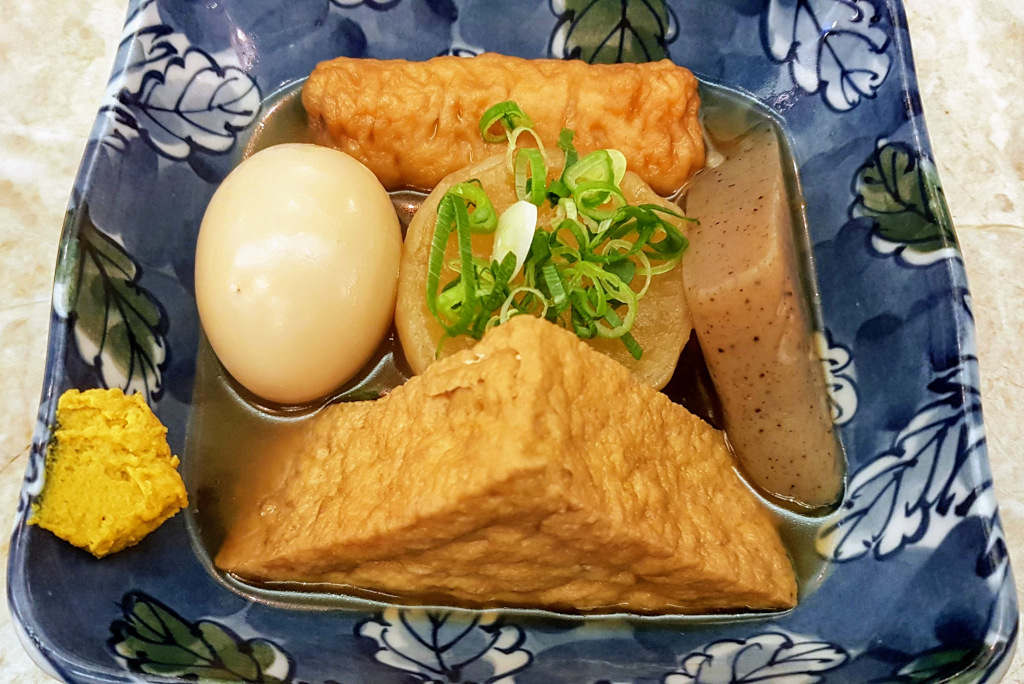
Oden - a savoury dashi broth based dish served with vegetables, hard boiled eggs, fishcake and tofu
Oden a classic colder weather warmer dish, and one still made at homes throughout the country, is a savoury soy-based dashi broth into which a variety of vegetables, hard boiled eggs, fishcake, and tofu-wrapped meat and more are added, served with a warming yellow mustard. New rice of the season, called shinmai, is revered by many for its uniquely sweeter taste and softer texture than the rice available the rest of the year.
Another seasonal favourite is kabocha - Japanese pumpkin. It's sweet, nutty flavour comes from when it is boiled, giving its flesh a fluffy texture, and its otherwise thick green outer skin softens and it more than edible. It makes for a great ingredient in tempura restaurants as well.
Autumn/Fall in Japan - key takeaways
Japan's autumn is a sensory delight, with its vivid fall colours and pleasant weather. It's less crowded too, letting you leisurely stroll under the fiery maple trees. Seasonal festivals, such as the Takayama Hachiman Matsuri, bring even more drama to this already enchanting season.
Winter adventures - skiing, snowboarding and natural wilderness
The winter season in Japan brings with it a unique charm, enticing both locals and international travellers alike with activities such as skiing and snowboarding. If you’re a winter sports fanatic, Japan's ski season is a must-do with its exceptional snowfall from December to April.
From mid-December until early April, this period provides a delightful time on the slopes. If you're wondering about the quality of Japanese snow - or 'Japow' as it's fondly known among enthusiasts - it's exceptional, recognised worldwide as some of the finest powder anywhere on earth. The light, fluffy powder creates perfect conditions for sliding down untouched landscapes.
SEE ALSO: 12 Must-Try Outdoor Activities in Japan
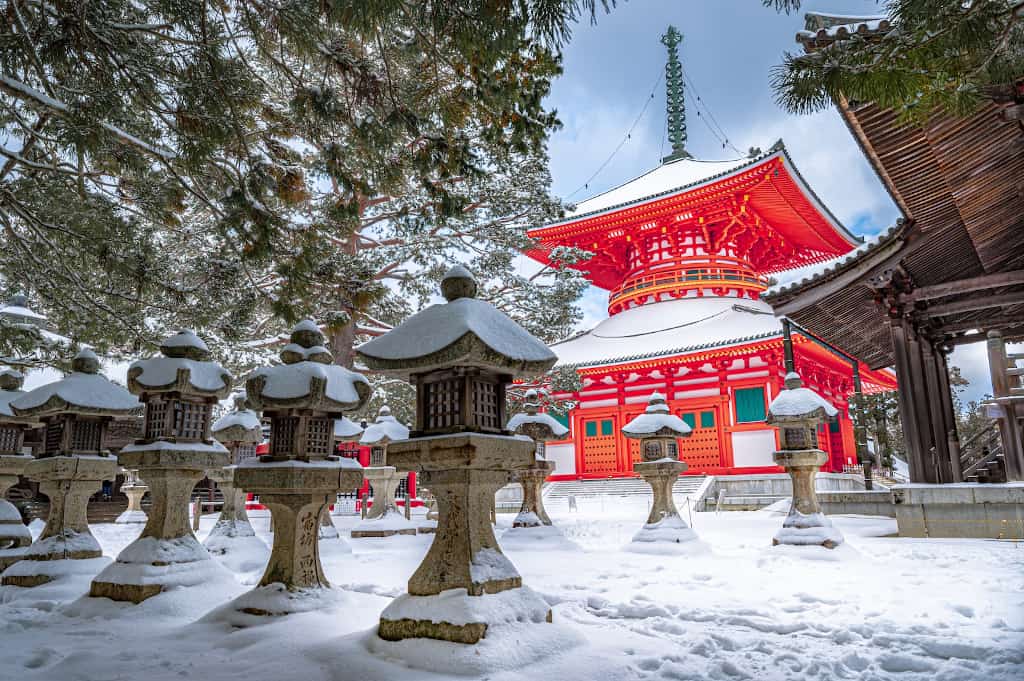
The Buddhist temples of Koyasan in Wakayama Prefecture to beautiful covered in winter snow
VIDEO: How to Enjoy Japan's Four Seasons | Winter
Japan's northernmost island Hokkaido is the perfect base for a winter in Japan. Aside from the famous Sapporo Snow Festival (in February) with its giant ice sculptures and fresh seafood and festival treats, vast areas of the island are designated national parks.
If it's more wilderness than cityscape you want, then Hokkaido will not disappoint you. It's even possible to jump on board an icebreaker ship and cut a path through the drift ice that fills the Sea of Okhotsk between Japan's most northern point and Russia's vast Siberia region directly above it.
Reasons why winter might be the best time of the year for you
Here's five key reasons why you might want to consider exploring Japan during the winter season.
1. Snowy landscapes and winter wonderlands: Japan's northern regions, such as Hokkaido and Tohoku, transform into a picturesque winter wonderland. Blankets of pristine snow cover the land, creating a serene and enchanting atmosphere. It's the perfect time for winter sports enthusiasts to hit the slopes at world-class ski resorts like Niseko, or enjoy snowboarding in the powder snow.
2. Onsen (hot springs) delight: Winter is the ideal time to indulge in Japan's famous hot springs, known as onsen. Soaking in a steamy outdoor bath surrounded by snow-covered scenery is incredibly relaxing. Some recommendations include the hot springs in Noboribetsu, Hakone, or Beppu on Kyushu. Don't forget to follow onsen etiquette, which includes washing yourself thoroughly before entering the bath. Honestly, winter is my absolute number one season fo soaking in onsen.
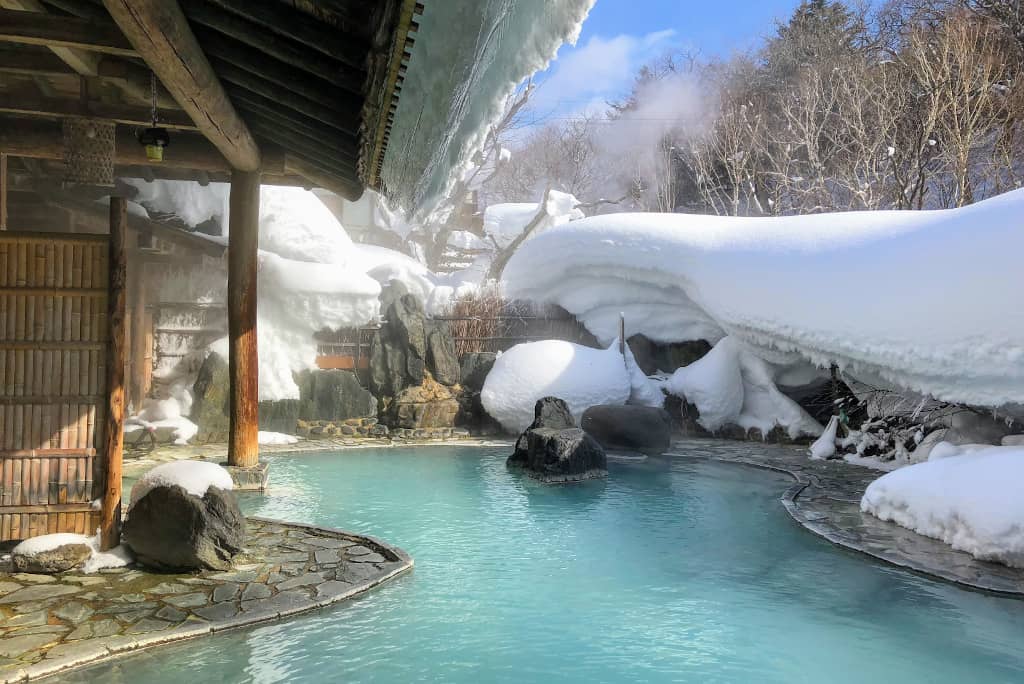
Matsukawa onsen in winter, Hachimantai, Northern Tohoku region
3. Illumination festivals: Japan goes all out with dazzling winter illumination festivals. Cities including Tokyo, Osaka, and Kyoto light up their streets, parks, and landmarks with mesmerizing displays of colourful lights and artistic installations. Kobe's annual Luminarie in January brings in millions of visitors every year. Strolling through these illuminated attractions is a great way to unwind in the evenings.
4. Unique winter foods: Japanese winter cuisine is a treat for your taste buds. Warm up with dishes like nabe (hot pot), oden (simmered ingredients in a savoury broth), and yakiimo (roasted sweet potatoes) from street vendors. Don't forget to try seasonal treats like mochi and mikan.
5. Fewer tourists: Compared to the peak tourist seasons of spring and autumn, winter sees fewer and smaller crowds, meaning you can explore popular attractions in particular with more ease. It can also often be more budget-friendly due to lower accommodation prices (ski resorts aside).
Seasonal winter foods
The traditional Japanese hotpot dish nabe is probably wintertime's signature dish. Quaffed in huge portions by sumo wrestlers throughout their training, the rest of the country tends to wait until winter to regularly sample this classic. Huddling with diners in a nabe specialist restaurant, somewhere in the Japanese countryside in winter, makes for a memorable meal and experience.
The Sea of Japan offers up the finest crab during winter, with Japanese foodies taking special train trips to seek out the best examples.
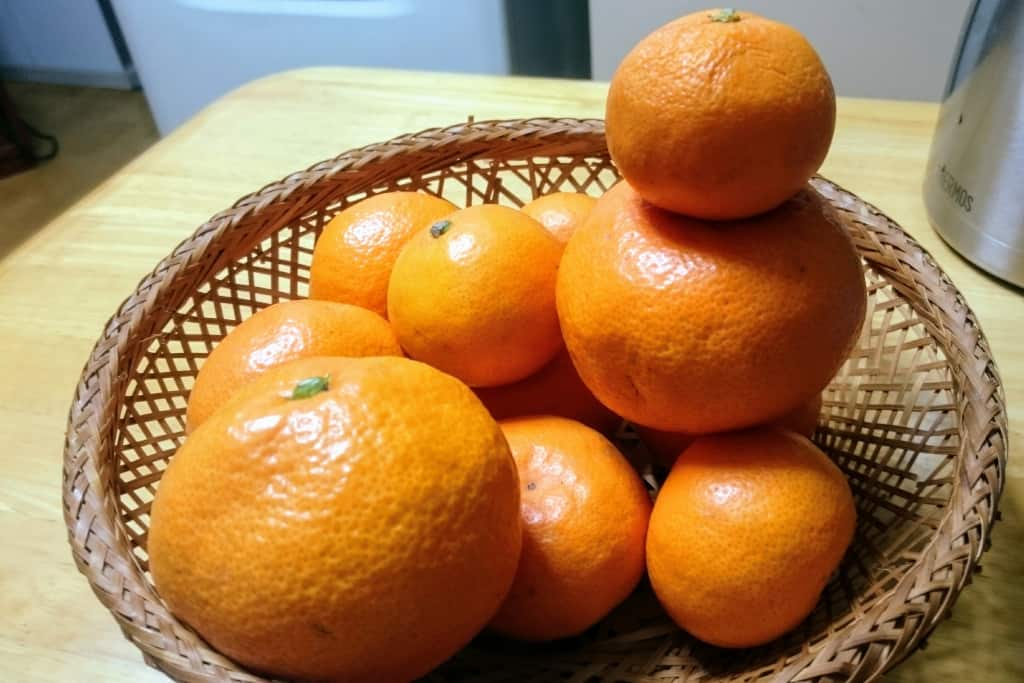
Japanese mikan are a type of mandarin, popular in wintertime
Mikan, a type of Japanese mandarin, are also synonymous with winter. Households will send boxes of them to family members in other parts of the country as a seasonal gift. They taste sweet and delicious and can be bought everywhere from city-centre supermarkets to honesty boxes in remote rural areas.
Specialities from the seas this time of year include oysters and buri (yellowtail) - a mature Japanese amberjack fish. While restaurants serve up curry udon - udon in a spicy Japanese curry broth that's popular as a quick grab-and-go lunchtime meal.
Winter in Japan - key takeaways
Get ready to dive into Japan's winter magic, packed with thrilling ski and snowboard adventures. The superb Japanese snow, or 'Japow', sets the stage for unforgettable slope action from mid-December through early April. And don't forget Hokkaido's Sapporo Snow Festival (February) - it's a must-see with its giant ice sculptures, cultural shows, and tasty Hokkaido treats.
Navigating peak travel seasons in Japan
Like pretty much everywhere else on the planet, Japan has its peak travel periods and, if you're not forewarned and prepared for them in advance, you can come away disappointed. And we don't want that to happen.
So, let's take a look the country's peak travel seasons, particularly Golden Week and the New Year's holiday period. If you want to experience Japan during these peak periods, learning a little about them now rather than later can help make your journey smoother and more enjoyable.
The hustle of Golden Week
A key time to note is Golden Week, a popular Japanese holiday running from April 29th to May 5th each year. It combines four national holidays over seven days: Showa Day (April 29), Constitution Memorial Day (May 3), Greenery Day (May 4), and Children’s Day (May 5).
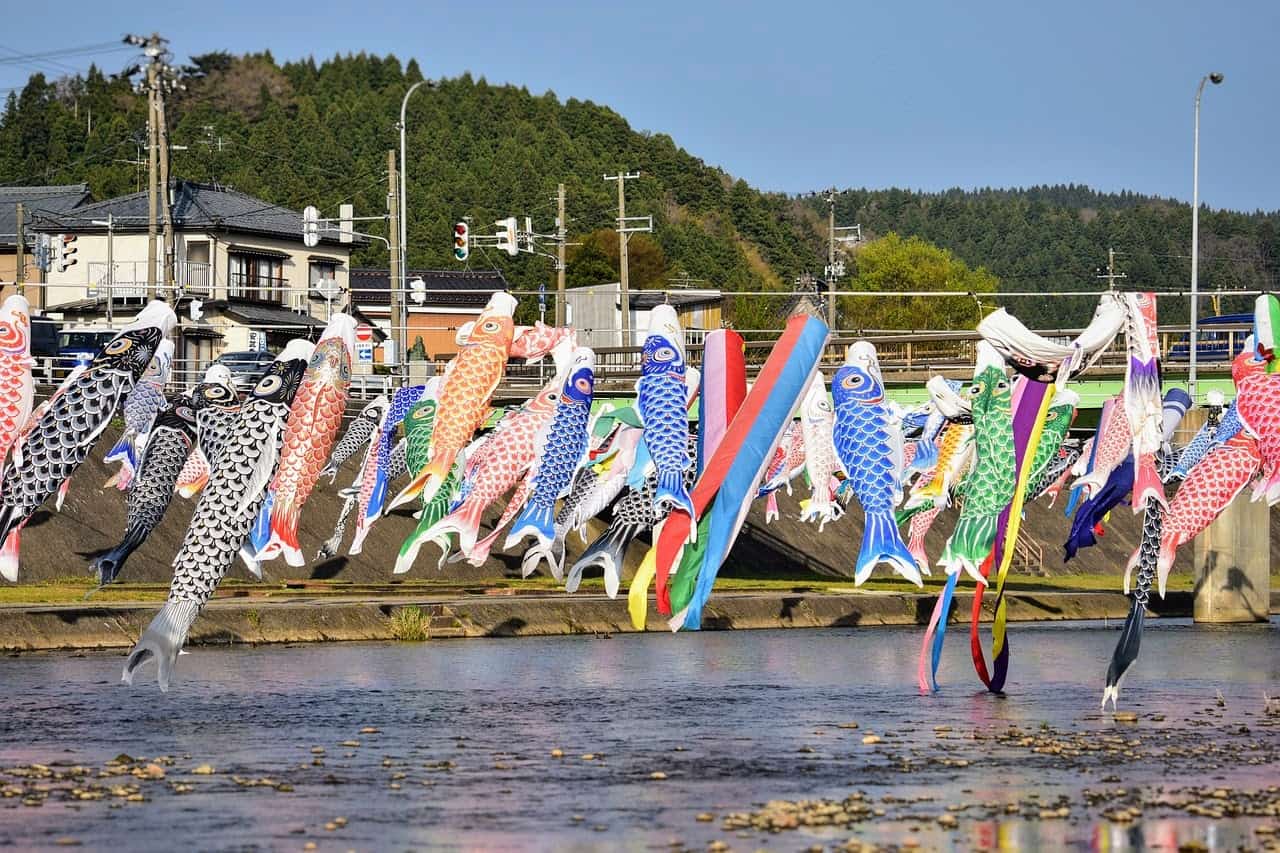
Koinobori carp streamers are hung out to celebrate Children's Day which ends the Golden Week holidays in Japan
During this week-long break, millions of domestic travellers hit the roads all over Japan, creating traffic jams spanning as much as 40 kilometres. (Not a great time to be driving in Japan then!) The disruption begins several days before the first holiday and only dissipates a few days after, once everyone has travelled back home.
In essence, it means crowded attractions and high hotel rates as millions of Japanese take advantage of the extended break for travelling.
New Year celebrations and their impact on tourism
Another important period is the New Year celebration, spanning December 29th through January 4th. This festive season brings family gatherings with visits to local shrines all over the country on New Year's Eve and the following day - Hatsumode - the first shrine visit of the new year - leading to massive crowds at major religious sites across Japan.
Crowds are not just an inconvenience; they also impact accommodation costs, with the majority of hotels significantly hiking their prices during this time.
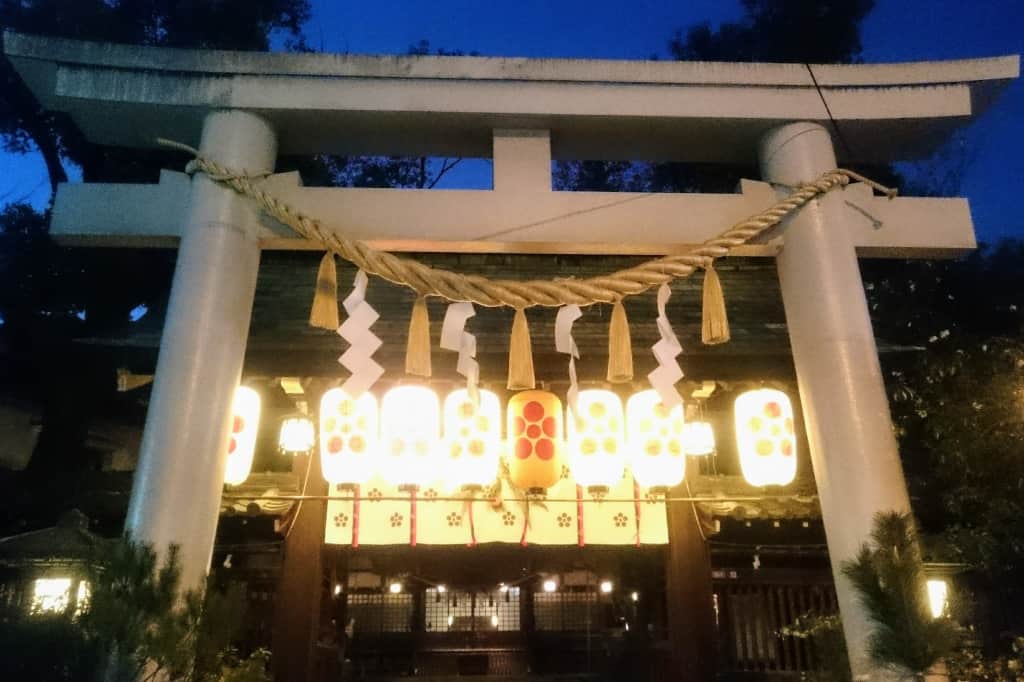
Visiting a shinto shrine on New Year's Eve and on New Year's Day is still popular with millions of Japanese
Tips to handle the crowd and high rates during these times
If you find yourself travelling during these peak times, here are some strategies.
Planning ahead could save you from inflated hotel rates, while considering alternative lodging options like guesthouses (minshuku) or ryokans might provide better availability. Japanese sakura fans sometimes book their accommodation a year in advance, so if you're planning to see the annual cherry blossom it's essential you book hotel rooms as early as you possibly can.
You may want to sidestep top-tier cities like Tokyo or Kyoto, which inevitably attract the most tourists, especially during national holidays. Opting for smaller towns offers equally memorable experiences, supports local economies and pretty much guarantees fewer and smaller crowds.
Japan's peak travel periods - key takeaways
Japan's peak travel seasons, namely Golden Week and New Year celebrations, draw massive crowds leading to packed attractions, traffic jams and inflated hotel rates. To dodge the hustle-bustle, plan ahead for accommodation or consider alternatives like smaller, independent guesthouses. Rather than heading to popular cities like Tokyo or Kyoto during these periods, explore smaller towns for a quieter yet just as unforgettable experience.
Best time to visit Japan: cost considerations - cheapest & most expensive periods
The costs of your Japan trip can vary depending on when you decide to go. Let's take a quick look at the times that will give you the best value for your money and those which may require a larger budget.
Off-peak season: Your wallet will thank you
If saving money is important to you, it's worth considering Japan during its off-peak seasons. These are periods with fewer tourists due to less-than-ideal weather or being outside popular holiday periods, resulting in lower accommodation rates.
You're looking at months like January (post-New Year), February (excluding the Sapporo Snow Festival week), June (during rainy season or tsuyu), and early December (before Christmas). During these quieter periods, you can find lower airfares and discounted hotel prices.
I tend to start my search for affordable flights using the Skyscanner website. They also have an app which you can use to set alerts of when prices change. You can read more about finding cheap flights to Japan in this post.
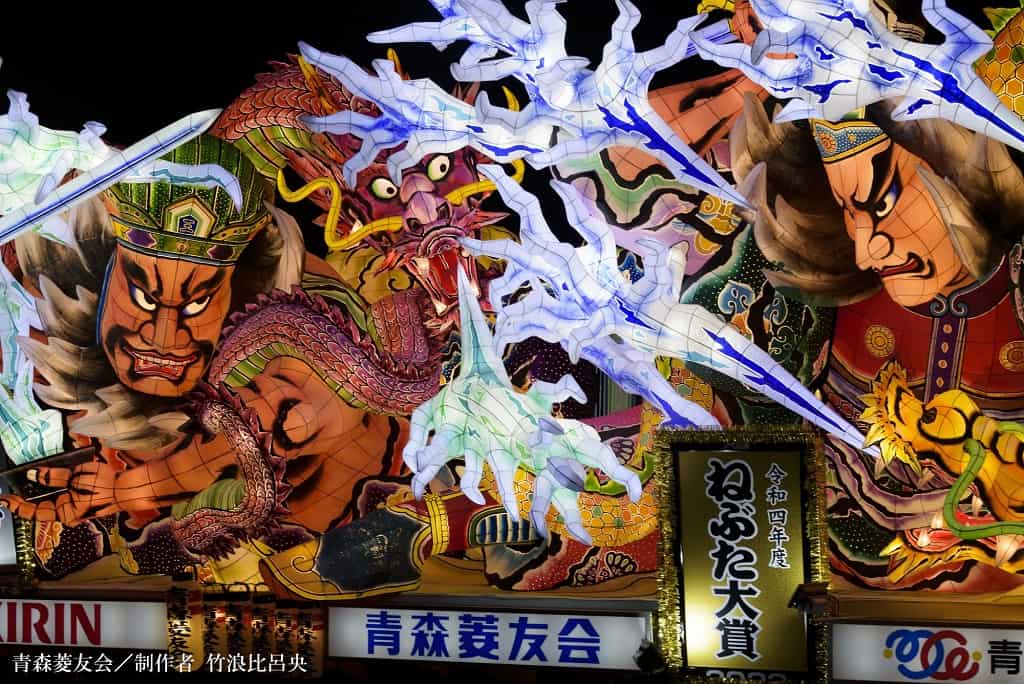
Aomori's Nebuta Matsuri summer festival takes place every year in early August | Photo © Aomori Tourism and Convention Association
Peak seasons: Breathtaking scenery but higher costs
If you want to experience the stunning nature of Japan, be prepared for higher costs during peak seasons. These periods see a surge in tourism, leading to increased demand and (significantly) higher accommodation prices. It's also when the school holidays fall, also pushing up prices (as it does in other countries).
We're talking about the sakura season from late March through April and the autumn leaf viewing time around November. Hotels often raise their prices significantly during these beautiful but busy periods.
Balancing cost with experience
A crucial aspect of planning your dream trip to Japan is finding the right balance between cost considerations and the kind of experience you want.
If cultural immersion is important to you but you're on a tight budget, consider exploring quieter yet culturally rich areas such as Hokkaido in winter. This could offer more affordable opportunities compared to Tokyo during Golden Week, where prices soar amidst the crowds of tourists celebrating one of Japan’s most significant holidays.
Balancing your travel budget - key takeaways
As you map out your Japan adventure, keep in mind timing can make or break your budget. If you're looking to save some cash, consider visiting during off-peak months like January or June. You'll likely find cheaper flights and hotel rates then. But if breathtaking landscapes are a priority and you don't mind splurging a bit, shelling out for the cherry blossom season or autumn leaf viewing periods could be money well spent.
Best time to visit Japan - Frequently Asked Questions - FAQs
What is the best time to visit Japan?
It depends on what you seek, like and and dislike but overall autumn and spring are probably the best seasons for most visitors to Japan. Winter offers some unique snow-based activities, while the distinctive festivals and fireworks of summer are the highlight for those willing to brave the season's hot temperatures and high humidity.
Use this guide to find out the best time that suits you and matches your personal preferences. Be sure to allow plenty of time for planning ahead, especially for spring.
What are the cheapest months to travel to Japan?
There are times of the year when things can be cheaper for travelling. Take advantage of lower accommodation prices during the off-peak seasons, typically January and February (excluding New Year's holidays).
Which month is Japan most expensive?
Avoid the months of March and April due to the popularity of the cherry blossom season. The increased (national and international) tourist influx leads to higher hotel rates, making it an expensive period to visit.
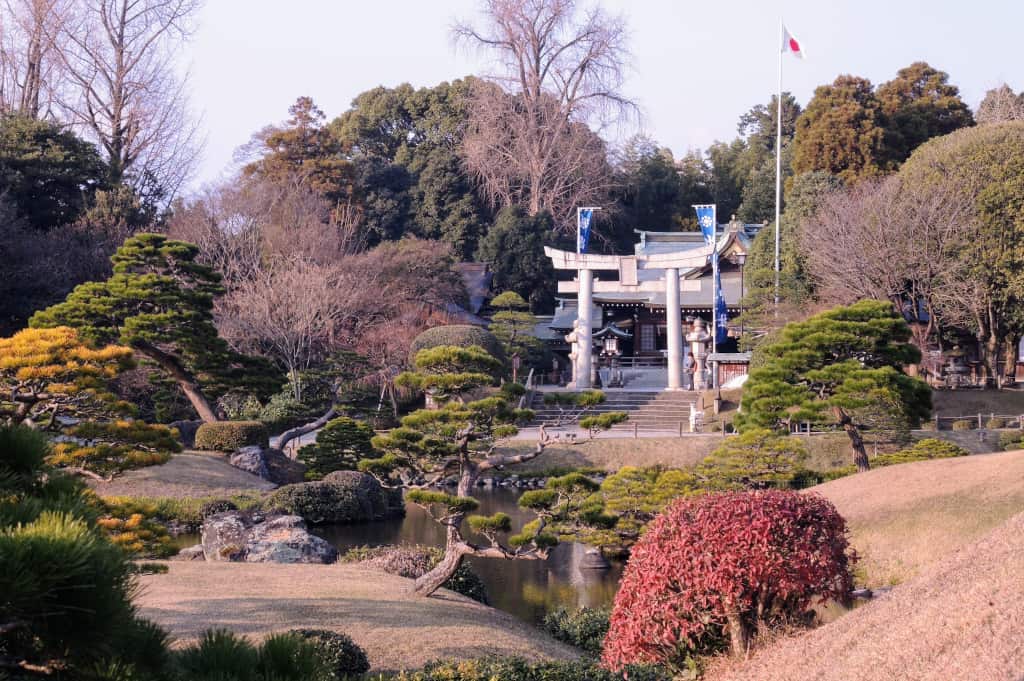
Suizenji Jojuen is a traditional style Japanese garden in Kumamoto, Kyushu
How many days in Japan is enough?
Honestly, 10 days as an absolute minimum for a first visit to Japan if you want to experience even just a small slice of the best the country has to offer. Begin by exploring major (but distinctive) cities like Tokyo, Kyoto, Hiroshima and Osaka, and use them as 'hub and spoke' bases from which you can quickly access a dramatically different and quieter, rural side of Japan's cultural highlights via a series of day trips.
When is the best time to visit Japan - for you?
OK, so that was a lot of info on finding the best time to visit Japan. But, hopefully, that means you now have a better understanding of what each season can offer, along with some of the best things you can see and do in each of them. Perhaps you've also found a few things you need to be aware of that will help you reach your final decision.
The good news is that from the ephemeral cherry blossoms of spring, to the snow-capped mountains in winter, Japan is an all year round destination.
Maybe you’ve been able to decide which season will best suit your first (or next) trip to Japan. Maybe you want to do a bit more research before you commit. If you should need more help planning your trip, check out my Planning Travel Hub. It’s tailor-made made for you.
If you want more guidance on planning your dream trip to Japan, have concerns about not speaking or reading Japanese, or want to start booking your Japan Rail Passes, WiFi, or a meet and greet on arrival, check out my Japan Travel Store. It includes all of my Japan travel resources.
Photo Gallery



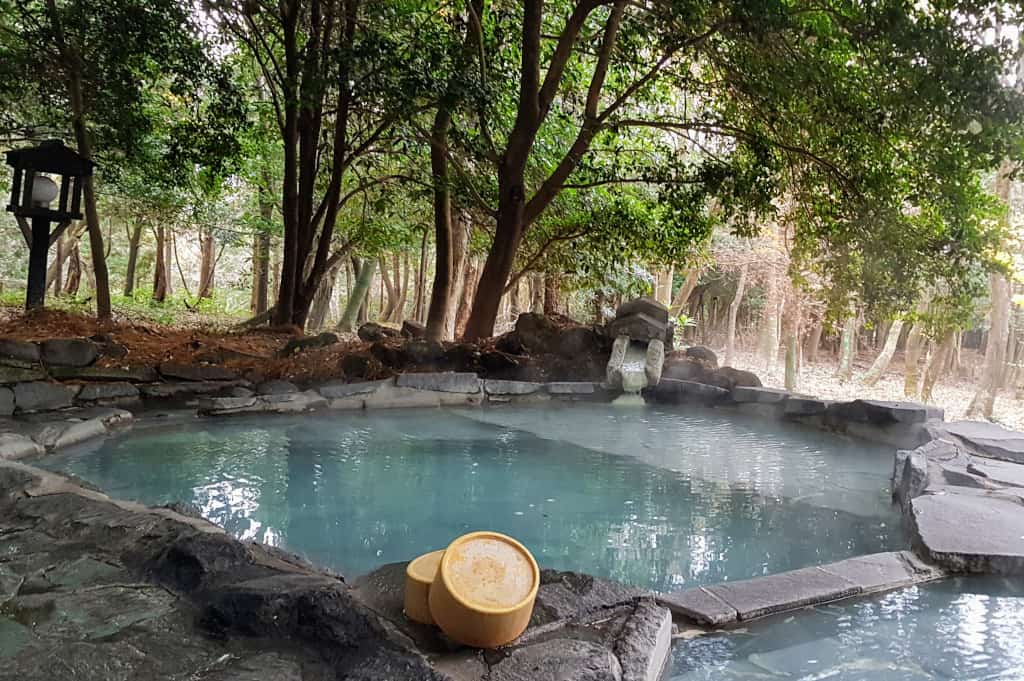













Need help planning your Japan trip?
Visit my Japan Travel Store

About the Author
A writer and publisher from England, Rob has been exploring Japan’s islands since 2000. He specialises in travelling off the beaten track, whether on remote atolls or in the hidden streets of major cities. He’s the founder of TheRealJapan.com.
Resources
Pre-bookable Trips and Experiences
Aomori Full-Day Private Trip with Government-Licensed Guide
From Tokyo: 1-Day Private Mt. Fuji Tour by Car
Hokkaido Biei Blue Pond Furano Flower Day Tour
Kyoto: 3-Hour Fushimi Inari Shrine Hidden Hiking Tour
Osaka: Main Sights and Hidden Spots Guided Walking Tour
Naha, Okinawa: Keramas Island Snorkeling Day Trip with Lunch
Further Reading
6 Magical Spots to See Spectacular Autumn Leaves in Japan
10 Regional Types Of Japanese Ramen You Need To Try
12 Must-Try Outdoor Activities in Japan
Cheap Flights to Japan & Flying FAQs
Discover Okinawan Food: Japan’s Life-Giving Diet
Discovering Sendai City On A Memorable Spring Day
How To Cruise An Icebreaker Ship In Hokkaido
Kinpusen-ji Temple in the Kii Mountains in Winter
Sakura Beautiful Cherry Blossom Festivals in Japan
A Winter Walk Through Exquisite Ainokura Village
Japan Island Guides
More Planning Resources
My List of Recommended Travel Resources
Recommended Japan Travel Resources
Buy Your Japan Travel Essentials
If you enjoyed this article please share this image online:

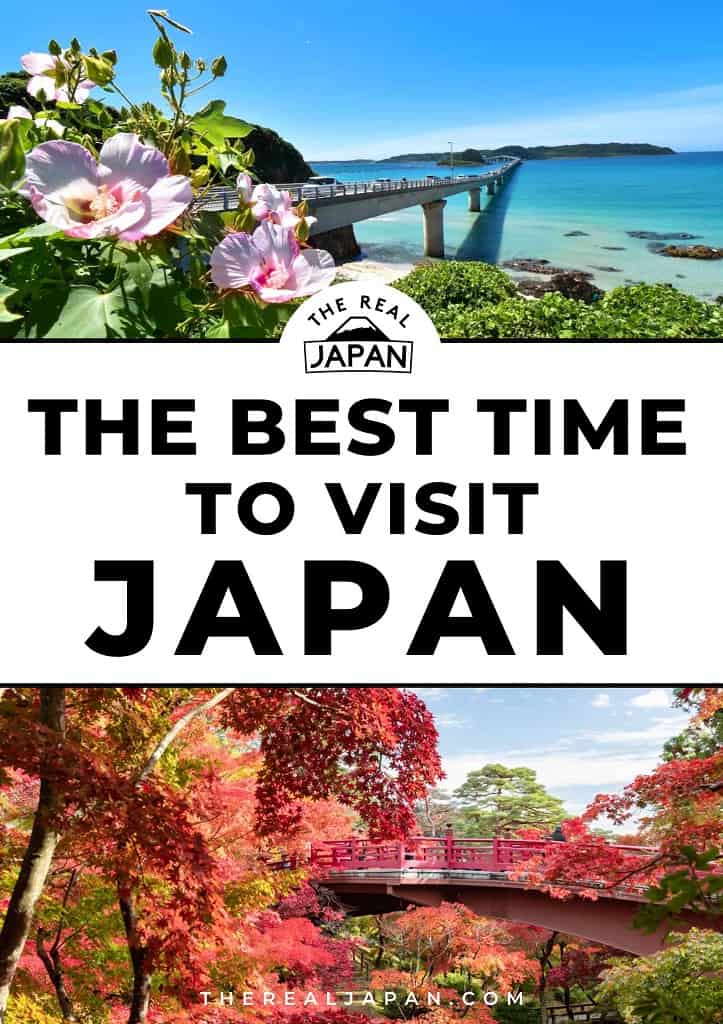

What a fantastic read! Your blog post on the best time to visit Japan is incredibly helpful and so detailed. I’ve always been fascinated by Japan’s distinct seasons, and your descriptions of each—from the cherry blossoms in spring to the vibrant autumn leaves—really paint a vivid picture. The tips on festivals and specific months are super useful for planning a trip. I’m curious, though, if you have any advice for first-time visitors to Japan who might be overwhelmed by the choices. Is there a particular month that strikes a balance between good weather, fewer crowds, and cultural experiences? Thanks for such an insightful guide! I can’t wait to experience Japan myself!
Thanks Yasser – good to hear you found this post so helpful. Your question about a particular month that strikes the best balance is a good (and tricky) one! Personally speaking, I’d say November has about the best balance. Many others might suggest a month in the spring, but it’s always busier and I’m not a fan of crowds. So November it is!